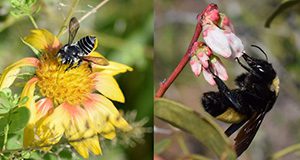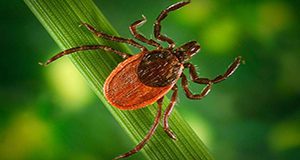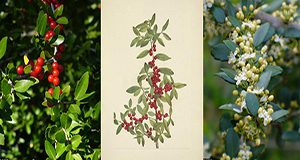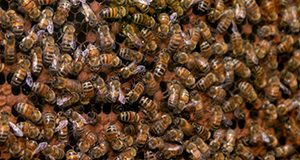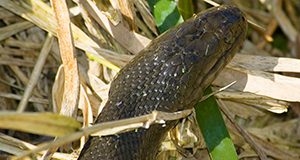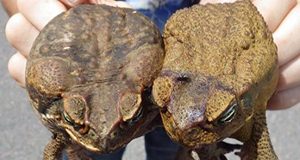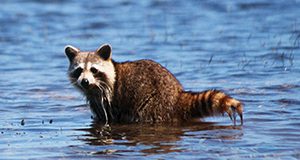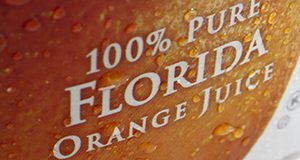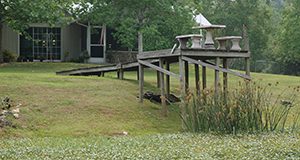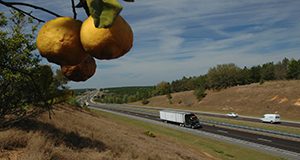Did you know there are over 320 species of bees in Florida and over 4,000 in the United States? Wild bees vary widely in behavior, color, size, and shape. Written by James R. Weaver, Shiala M. Naranjo, Emily Noordyke, and Rachel E. Mallinger and published by the UF/IFAS Entomology and Nematology Department, Bees of Florida is a two-page pdf guide to some common bee groups and species you may encounter in Florida.
https://edis.ifas.ufl.edu/in1285
Author: Susan Gildersleeve
Facts about Wildlife Diseases: Ehrlichiosis
Ehrlichiosis is a bacterial disease that is transmitted to humans and animals from ticks. In most cases, symptoms are mild, but sometimes if antibiotic treatment is delayed, it can cause severe illness and even death. In Florida, ehrlichiosis is an emerging disease. The hotspot of transmission is in north central Florida, but the disease is underdiagnosed. This 4-page fact sheet written by Yasmin Tavares and Samantha Wisely and published by the UF/IFAS Department of Wildlife Ecology and Conservation describes ehrlichiosis and explains how it is transmitted, how to know if you have it, and how to prevent yourself and your friends and family from getting it.
https://edis.ifas.ufl.edu/uw481
Yaupon Holly Culture and Pest Management for Tea Production and Ornamental Use
Yaupon holly, Ilex vomitoria Aiton, is an evergreen woody plant native to the southeastern United States. The species is widely used as a landscape ornamental plant because it tolerates a wide range of soil and environmental conditions, is available in various forms, and attracts wildlife, especially native birds. Recently, there has been a resurgence of interest in cultivating the plant for the caffeinated beverages that can be made from its leaves. This 8-page fact sheet written by Matthew A. Borden, Mark A. Wilhelm, and Adam G. Dale and published by the UF/IFAS Entomology and Nematology Department provides a guide to managing yaupon holly and protecting it from pests. It will be useful to both commercial growers and homeowners interested in growing this beautiful and useful plant.
https://edis.ifas.ufl.edu/in1299
Best Management Practices for Live Bee Removals in Florida: A Beekeeper’s Guide
Feral colonies of honey bees nesting near humans or domestic animals can pose a stinging threat and may be considered a nuisance and possibly a threat to animal or public health, and therefore bees often need to be removed or eradicated when they are found nesting near homes or other property. This 14-page guide written by Mary Bammer, Jamie Ellis, Eric Baxter, Krista Butler, John Coldwell, B. Keith Councell, Kevin Easton, Brendhan Horne, Brandi Stanford, and Amy T. Vu and published by the UF/IFAS Entomology and Nematology Department details best management practices for live bee removals and serves as a reference for beekeepers who choose to perform live bee removal services in Florida.
https://edis.ifas.ufl.edu/in1297
Container Mosquito Habitat Community Cleanup: A How-To Guide for Event Organization
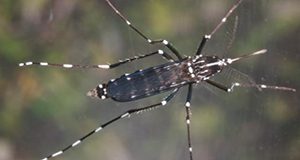
Being bitten by the container mosquitoes Aedes aegypti and Ae. albopictus means a higher risk of becoming infected with Zika, dengue, or chikungunya virus. Container mosquitoes develop in the water that collects in discarded tires, jars, cans, buckets, and boats. The best way to prevent irritating bites and dangerous mosquito-transmitted illnesses is to get rid of all trash that holds water. This 6-page fact sheet written by Amy Hallock, Eva A. Buckner, Ricky W. Telg, and Alena R. Poulin and published by the UF/IFAS Entomology and Nematology Department is packed with recommendations that will help you to successfully develop and host a cleanup event to reduce potential mosquito larval habitats in your community and keep yourself and your neighbors safe.
https://edis.ifas.ufl.edu/in1286
Eastern Indigo Snake
Learn more about eastern indigo snakes!
The Wildlife of Florida Factsheet series was created to provide the public with a quick, accurate introduction to Florida's wildlife, including both native and invasive species. Authors Tyler Buckley and Raoul K. Boughton hope this 2-page quick guide and others in the series published by the UF/IFAS Department of Wildlife Ecology and Conservation will inspire readers to investigate wildlife in their own backyards and communities and understand the amazing biodiversity of wildlife in the state of Florida.
https://edis.ifas.ufl.edu/uw475
El sapo de caña o “Bufo” (Rhinella marina) en Florida
El sapo de caña (Rhinella marina), a veces conocido como el “bufo”, sapo gigante o marino, es nativo del extremo sur de Texas, México, América Central y la zona tropical de la América del Sur, pero está establecido en Florida. Los sapos de caña se introdujeron inicialmente en Florida como un método de control biológico de plagas en la década de 1930. Se suponía que los sapos comieran escarabajos que amenazaran el cultivo de la caña de azúcar, pero la población introducida no sobrevivió. This 7-page fact sheet written by S. A. Johnson, A. Wilson, and Armando J. Ubeda and published by the UF/IFAS Department of Wildlife Ecology and Conservation is the Spanish translation of The Cane or “Bufo” Toad (Rhinella marina) in Florida.
https:edis.ifas.ufl.edu/uw477
The Life of Lichen
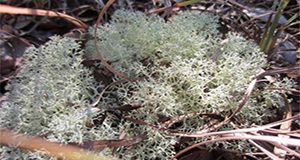
Lichen represent a fascinating combination of organisms working together to form some familiar and unfamiliar growths on a variety of substrates. This 6-page fact sheet written by James Stevenson, Lara B. Milligan, and Jennifer L. Gillett-Kaufman and published by the UF/IFAS Entomology and Nematology Department defines and explains these organisms.
https://edis.ifas.ufl.edu/in1296
Facts about Wildlife Diseases: Raccoon-Borne Pathogens of Importance to Humans—The Raccoon Roundworm
Diseases carried by northern raccoons present significant health hazards to both people and pets. This 7-page fact sheet written by Caitlin Jarvis and Mathieu Basille and published by the UF/IFAS Department of Wildlife Ecology and Conservation is part of a series addressing health hazards associated with raccoons. It describes the raccoon roundworm and the disease it causes, baylisascariasis, which normally causes little or no trouble to raccoons but in severe cases can make people and their pets very sick. Sick wild animals can act tame, but do not approach! Contact animal control or a wildlife rehabilitator if an animal seems to be behaving abnormally or if you suspect it is sick.
https://edis.ifas.ufl.edu/uw480
Facts about Wildlife Diseases: Raccoon-Borne Pathogens of Importance to Humans—Parasites
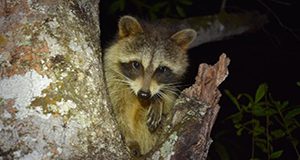
Diseases carried by northern raccoons present significant health hazards to both people and pets. This 7-page fact sheet written by Caitlin Jarvis and Mathieu Basille and published by the UF/IFAS Department of Wildlife Ecology and Conservation is part of a series addressing health hazards associated with raccoons. It describes the most important internal and external parasites associated with raccoons. Sick wild animals can act tame, but do not approach! Contact animal control or a wildlife rehabilitator if an animal seems to be behaving abnormally or if you suspect it is sick.
https://edis.ifas.ufl.edu/uw479
Facts about Wildlife Diseases: Raccoon-Borne Pathogens of Importance to Humans—Viruses and Bacteria
Diseases carried by northern raccoons present significant health hazards to both people and pets. This 7-page fact sheet written by Caitlin Jarvis, Samantha M. Wisely, and Mathieu Basille and published by the UF/IFAS Department of Wildlife Ecology and Conservation is part of a series addressing health hazards associated with raccoons. It describes rabies, canine distemper, feline distemper, canine parvovirus, salmonellosis, and several other raccoon-borne viral and bacterial diseases of concern to people and their pets. Sick wild animals can act tame, but do not approach! Contact animal control or a wildlife rehabilitator if an animal seems to be behaving abnormally or if you suspect it is sick.
https://edis.ifas.ufl.edu/uw478
Chilli Thrips on Blueberries in Florida
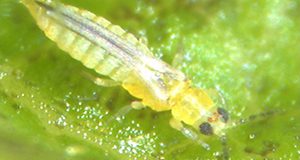
Chilli thrips, (Scirtothrips dorsalis Hood; Thysanoptera: Thripidae), is an economically important pest of vegetable, fruit, and ornamental crops throughout Asia, Africa, Oceania, the Caribbean, and some parts of South America and is an invasive pest in several US states. Chilli thrips were first observed in Florida in 1991. It was first recorded in blueberries in Hernando, Pasco and Sumter counties in July of 2008. This 4-page fact sheet written by Oscar E. Liburd, Babu R. Panthi, and Douglas A. Phillips and published by the UF/IFAS Entomology and Nematology Department discusses the life cycle of the chilli thrips, plant damage it causes, and management recommendations for chilli thrips in blueberries in Florida.
https://edis.ifas.ufl.edu/in1298
Do Millennials Have a Stronger Demand for Orange Juice?
Accounting for a quarter of the population in the United States, the millennial generation is believed to have stronger buying power than other generations. But does targeting orange juice marketing to millennials, and, in particular, millennial parents, reap rewards? This 4-page fact sheet written by Yan Heng, Ronald W. Ward, and Lisa A. House and published by the UF/IFAS Food and Resource Economics Department presents the results of a survey examining several generations and their impact on demand for orange juice to find out whether targeting this one is a wise marketing strategy.
https://edis.ifas.ufl.edu/fe1089
Facilitating Community Change: Lessons from Climate Adaptation to Guide Extension Engagement
This 19-page publication written by Martha Monroe and Annie Oxarart and published by the UF/IFAS School of Forest Resources and Conservation provides Extension faculty in Florida with useful strategies to help communities understand, discuss, evaluate, and recommend potential solutions to current and future problems. While much of the research behind these strategies has been conducted in the context of climate adaptations in vulnerable communities and ecosystems, such as coastal fisheries, rainfed agriculture, and floodplain cities, the principles that underlie these processes are universal. The same strategies and guidelines can be tailored for any issue that requires the public to become more informed, generate options, and understand advantages and disadvantages of various choices. In these situations, Extension agents can facilitate a process of thoughtful deliberation to help communities find common ground and move toward finding solutions.
https://edis.ifas.ufl.edu/fr430
Constructing a Southwest Florida Bell Peppers Enterprise Budget
Enterprise budgets can assist with forecasting as well as help managers coordinate resources, make production decisions, examine expenditures, and anticipate outcomes from changes in production practices. They can help producers determine what to produce, how many acres to produce, the cost of production, and the necessary price to be profitable. This 6-page fact sheet written by Tara Wade, Barbara Hyman, and Eugene McAvoy and published by the UF/IFAS Food and Resource Economics Department describes the process used to create the 2018-19 enterprise budget for bell peppers in southwest Florida.
https://edis.ifas.ufl.edu/fe1088
FRAGSTATS: A Free Tool for Quantifying and Evaluating Spatial Patterns

Human activities such as urbanization and agriculture have triggered rapid land cover change, resulting in the loss of natural ecosystems. Land managers managers seeking to plan effectively for future land use that preserves biodiversity and the valuable services provided by natural ecosystems must understand land cover change and its environmental impacts. Quantifying patterns of land cover change objectively in order to understand them can be difficult without the proper resources, however. This 9-page fact sheet written by Benxin Chen and Basil V. Iannone III and published by the UF/IFAS School of Forest Resources and Conservation introduces one such resource, a free software called FRAGSTATS. Readers will learn to create input data, run the FRAGSTATS software, and interpret outputs. A few basic concepts of landscape ecology and GIS are included, but this fact sheet is intended for readers with at least some GIS knowledge.
https://edis.ifas.ufl.edu/fr431
The Electronic Logging Device Mandate and Costs for Refrigerated Citrus
Speedy truck transportation is required to get products like fresh produce from the farm to the grocery store before it spoils. The Electronic Logging Device (ELD) Mandate from the Federal Motor Carrier Safety Administration could significantly affect trucking costs for agricultural producers. This 6-page publication written by Tara Wade, Shellye Suttles, and Derek Farnsworth and published by the UF/IFAS Food and Resource Economics Departmentuses truck shipment data to analyze transportation costs and identifies potential future effects of the ELD Mandate.
https://edis.ifas.ufl.edu/fe1086
Attitudes about Sea-Level Rise Adaptation: Comparison between Miami-Dade County and the Rest of Florida

Sea-level rise and climate change are important issues in science, politics, and communities. Sea-level rise is a particularly contentious topic in Florida, where expected impacts include coastal flooding, shrinking shorelines, and saltwater intrusion. It is unclear what Floridians think about sea-level rise and the ways in which the state can adapt to these impacts. This 5-page fact sheet written by Bailey Emrick, Misti Sharp, and Xiang Bi and published by the UF/IFAS Food and Resource Economics Department summarizes findings from two recent surveys examining attitudes of Miami residents and those of residents of the rest of Florida about sea-level rise and potential adaptations to it.
https://edis.ifas.ufl.edu/fe1084
A Beginner’s Guide to Water Management—Common Aquatic Birds Using Florida Lakes
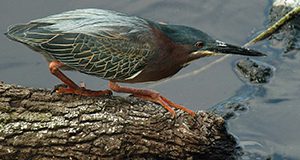
Florida LAKEWATCH is a citizen scientist program that monitors Florida's lakes. Since it was established in 1991, Florida LAKEWATCH has worked with thousands of volunteers to collect water quality data on more than 2,700 aquatic systems in Florida. It is the most comprehensive and longest-running water quality data source in the United States, if not the world. This 18-page circular written by Mark V. Hoyer and published by the UF/IFAS Program in Fisheries and Aquatic Sciences of the School of Forest Resources and Conservation describes Florida LAKEWATCH's volunteer aquatic bird-monitoring program. Citizen volunteers can provide a comprehensive and intimate understanding of birds and their interactions with Florida lake systems, helping to detect the changes in the types and numbers of birds using lakes that may indicate important natural or human-caused environmental trends. Whether you want to identify birds you’ve spotted or take an active role in the management and conservation of Florida's natural resources, this circular can help you learn the basics.
https://edis.ifas.ufl.edu/fa229
Lumpy Jaw in White-Tailed Deer

Lumpy jaw is a deer health problem that all deer farmers eventually face. It gets its name from the swollen jaws or cheeks and necrotic lesions it causes in and around the jaw bones of animals including white-tailed deer. The disease is considered a significant problem for deer farms in North America, where it is one of the most important production-limiting diseases and causes high rates of mortality in fawns. This 4-page fact sheet written by Juan M. Campos Krauer, Samantha M. Wisely, and Hannah M. Barber and published by the UF/IFAS Department of Wildlife Ecology and Conservation explains how deer acquire lumpy jaw, how to spot it in deer, how to treat it, and how to prevent it in the first place.
https://edis.ifas.ufl.edu/uw472
